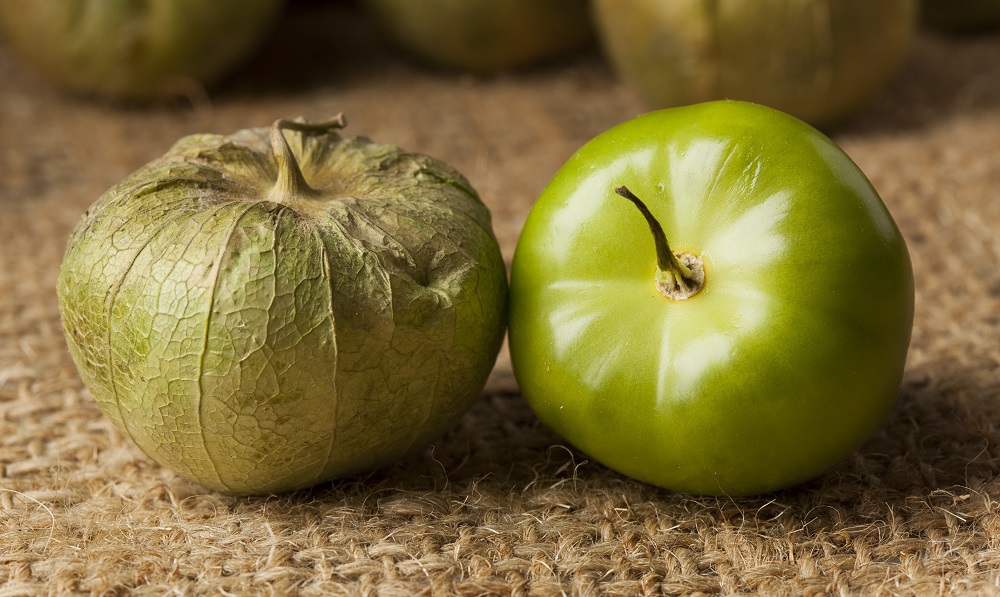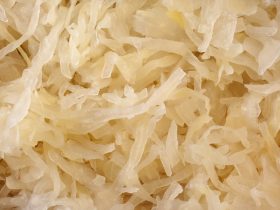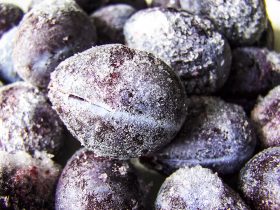Tomatillos, also known as Mexican Husk Tomatoes in the United States, are distant cousins to the more common tomatoes, though their appearance and taste are distinct from one another1. Possessing a more tart and acidic taste than tomatoes, tomatillos are most often used in producing Mexican sauces.
Because of this particular use, tomatillos are best stored for longer periods of time, as only a few are needed when creating sauces and dips.
Tomatillos can and should be frozen in order to preserve them for extended amounts of time. Though the tomatillo alone lasts a relatively long time compared to other forms of fresh produce, they still require some form of preservation should the entire batch not be used immediately.
How Long Do Tomatillos Last at Room Temperature?
Wrapped lightly in a paper bag, tomatillos can last up to three days on your counter-top, so long as the husk has not been removed yet.

If choosing to go this route, it is advisable to purchase tomatillos before they are ripe so as to maximize the window that they will be safe to eat, as well as discourage insects from consuming it.
Unripe tomatillos present a very similar appearance to ripe tomatillos, and it is best to inspect the age of the husk to determine their age.
Can Tomatillos be Stored on the Counter?
In order to store tomatillos on the counter, simply wrap them in a paper bag and place in a dark, cool area of your kitchen away from direct sunlight. Note that unless unripe, the tomatillo will begin to desiccate within two days, especially in the presence of strong air-flow.
How Long Do Tomatillos Last in the Fridge?
Far more advisable than storing your tomatillos out in the open, choosing to preserve your tomatillos in the fridge is just as easy.
Wrap the tomatillos lightly in a paper bag as if you were to store it on the counter, but instead place the bag within an air-tight container and leave in the fridge.
This will extend the tomatillo’s shelf-life up to three weeks, depending on the presence of moisture and the ripeness of the fruit2.
Equipment Needed to Freeze the Tomatillos
All that is needed in order to freeze the tomatillos is an air-tight container large enough to comfortably contain the fruit and a freezer capable of reaching 32 degrees Fahrenheit.
Freezing the Tomatillos
In order to begin freezing the tomatillos, first make certain that they have fully reached their ripened stage.
Ensure that the tomatillo’s husk is wrapped loosely around the fruit, with very little space between the skin and the husk. The husk may be torn, which also indicates ripeness. Additionally, make note of the color of the skin. If it is beginning to yellow or grow a dull shade of purple, this indicates that the fruit is overripe, an unsuitable candidate for freezing.
Peel the husk from the fruit and dispose of immediately, as the husk is inedible and should not be left easily accessible to pets or children.
A sticky residue will be present on the surface of the tomatillo after removing the husk. Place the tomatillos in a bowl and wash the fruits thoroughly, ensuring there are no stray bits of husk or sap.
Once the residue has been rinsed off, pat dry with a cloth or tissue paper. Now properly dried, simply place the clean tomatillos in your air-tight container and leave in the freezer.
How Long Do Tomatillos Last in the Freezer?
In the perfect conditions, tomatillos can last as long as twelve months when placed in the freezer.
In order to get the most out of the tomatillo’s preservation, properly dry them after washing, and do not subject them to pressure as this will rupture their skin, shortening their potential shelf-life.
Thawing Frozen Tomatillos
In order to thaw your frozen tomatillos, the first order of business is to decide what sort of dish you will incorporate the fruit into.
If your plans involve using the tomatillos to produce a salsa, dip, soup or sauce, using the whole frozen tomatillo is all that is needed. Simply place the fruit in your blender, saucepan or other kitchen equipment.
On the other hand, should you need the tomatillos for dishes such as in salads or pizza, it is best to take the tomatillos and place them in the fridge. Leave them overnight or until their texture has returned to a normal consistency.
Can Blended Tomatillos be Stored in the Freezer?
Yes. In the event that you have already decided what sort of dish you will make with your tomatillos, pureeing them is an excellent way to prepare ahead of time.
In order to preserve pureed tomatillos, simply place in a flexible air-tight plastic container, leaving an inch of space between the cover and the fruit in order to account for any expansion that may occur.
Keep in mind that, if adding other expirable ingredients to the pureed tomatillo, the shelf-life will only be as long as the quickest expiring ingredient within the container. This is because of chemicals released by colonies of bacteria, as well as certain enzymes organic produce release when nearing the end of their edibility.
Things to Keep in Mind
Similar in behavior to all organic produce, tomatillos are subject to the damaging effects of freezing. While tomatillos hold up markedly well to this process, there will still be some softening of the fruit. This will not be a problem if you are preserving the tomatillos for sauces or similar dishes.
As always, should you wish for the absolute best quality tomatillo, it is best to purchase them fresh and shortly before cooking them. This article simply exists in the event that long-term storage is preferable.
It is also important to be aware of the potential toxicity of the tomatillo’s stem, leaves and its husk. Do not consume these parts of the plant, as they may be harmful to you.
References
1. Morton, Julia F. (1987). Mexican husk tomato, Physalis ixocarpa Brot., Physalis aequata Jacq. In: Fruits of Warm Climates. Purdue University
2. Kimberly Cripps (July 2020) Tomatillo Pick it! Try it! Preserve it! South Dakota University https://extension.sdstate.edu/tomatillo-pick-it-try-it-it-preserve-it





Hi, I'm Dom
Dom Eats was started to help other people fall in love with food. While cooking can feel intimidating, it doesn't have to be.